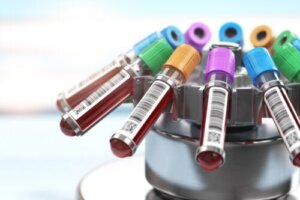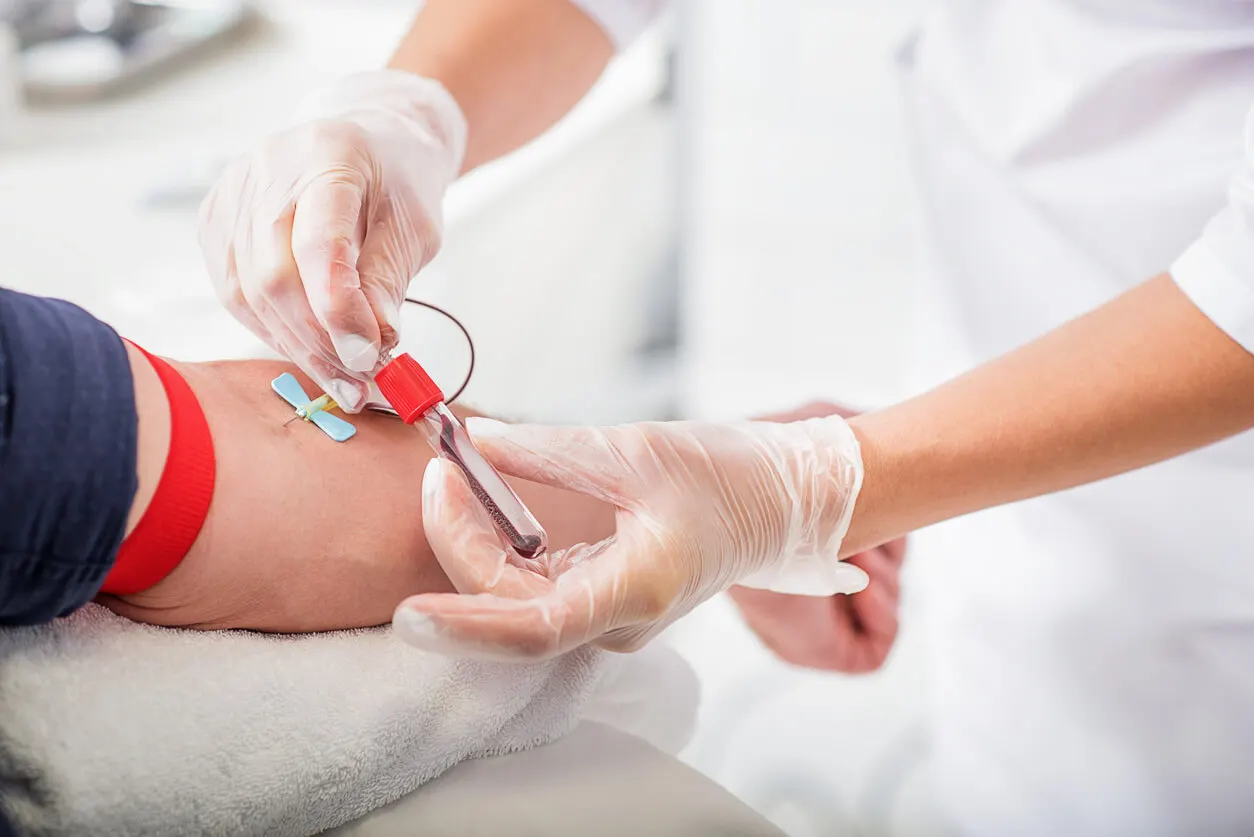A New Blood Test that Detects Tumors Before Symptoms Occur


Written and verified by the doctor Leonardo Biolatto
The last congress of the European Society of Oncology brought hope. The results of the PATHFINDER study presented a blood test that detects tumors by means of a blood test.
This would mean a monumental advance in screening plans. While improved techniques for early diagnosis of breast and colon tumors have been achieved, doing so through a blood sample would change the paradigm.
The experts involved and the scientific community recognize that there’s real hope. If research continues to confirm the method, in a few decades we could be able to take advantage of it in medicine.
The results presented
The PATHFINDER study is a piece of research conducted with a minimum of 12 months of follow-up of more than 6000 people who choose to participate voluntarily. The objective is to test the sensitivity and detection efficacy of a blood test called Galleri.
What is interesting about this project is that it’s multicenter. That is to say, it’s being carried out at the same time in different countries, with the participation of very different people and under the auspices of renowned health institutions. Among the latter are the Cleveland Clinic and the Mayo Clinic.
The results presented at the oncology congress show the data collected over the last few months by the team monitoring the volunteers. Using blood samples from more than 6600 people over the age of 50, the Galleri test was positive for cancer in 92. Then, after further tests, only 35 of the 92 were confirmed as cancer patients.
Although the numbers seem low, the mechanism is actually promising. The 35 people who had cancer had shown no symptoms. The blood test detected tumors that, perhaps, would be found years later with traditional methods.
The fundamental importance of this study is that it is the first investigation in patients with tumors that haven’t yet been diagnosed and who weren’t suspected of having cancer.

Read more here: Hürthle Cell Cancer: Causes, Symptoms and Treatment
The blood test that detects tumors … but how?
In our blood there are pieces and fragments of DNA that cells discard. These parts originate from both normal metabolic processes and those that take place in malignant cells.
The point is that cancer cells produce particular DNA fragments. These are known as tumor DNA. Their circulation in the blood has long been the subject of study.
The PATHFINDER research aims to validate methods that recognize tumor DNA when it’s only present in low proportions. This would lead to an early diagnosis of tumors that have just started but are already causing biochemical signs. Of course, they don’t yet have the potency to trigger obvious physical symptoms.
With modern laboratory techniques, the Galleri blood test amplifies the signal of this tumor DNA and makes it “more visible” to the biochemist. Its presence indicates that cancer is present. Doctors will then perform further tests to find the malignant cells in and treat them.
What are the limits of this advance?
There’s still a long way to go in order to achieve an efficient blood test. However, the trials of a few years ago with patients who did have an oncological diagnosis have borne fruit. As of 2020, we know that Galleri identifies up to 50 different types of cancer.
One of the biggest problems is sensitivity. The method has to be perfected so that the positives it gives are real positives and the negatives are discarded with certainty.
It has to be perfected to reach the point where we can detect patients with early tumors without subjecting those who don’t have oncological diseases to unnecessary diagnostic tests.
The researchers themselves recognized that the positive findings were excessive. Less than half of the people considered by the analysis had cancer confirmed by other methods. Without improvements, this could be introduced en masse.
We are at the beginning of a new way of doing medicine and everything must be viewed with caution because these are very preliminary results and, unfortunately, they cannot and should not be applied to everyday clinical practice.

What is the future of the blood test that detects tumors?
The Galleri blood test for the early detection of tumors is still being investigated. For the time being, it has governmental authorization in the United States.
Some results are expected with a larger number of participants, and we could soon have news of its implementation in more than 100,000 volunteers. The larger number augurs better knowledge about the sensitivity and specificity of the procedure.
The underlying hope is to find a blood test that will serve as a screening test for tumors which don’t have a specific test, because many patients arrive at hospital with advanced cancer and less chance of effective treatment.
All cited sources were thoroughly reviewed by our team to ensure their quality, reliability, currency, and validity. The bibliography of this article was considered reliable and of academic or scientific accuracy.
- Liu, M. C., et al. “Sensitive and specific multi-cancer detection and localization using methylation signatures in cell-free DNA.” Annals of Oncology 31.6 (2020): 745-759.
- Castelli, J., et al. “ADN tumoral circulant: principes, applications actuelles en radiothérapie et développement futur.” Cancer/Radiothérapie 22.6-7 (2018): 653-659.
- Nikolaev, Sergey, et al. “Circulating tumoral DNA: Preanalytical validation and quality control in a diagnostic laboratory.” Analytical biochemistry 542 (2018): 34-39.
- Klein, Eric A., Tomasz M. Beer, and Michael Seiden. “The Promise of Multicancer Early Detection. Comment on Pons-Belda et al. Can Circulating Tumor DNA Support a Successful Screening Test for Early Cancer Detection? The Grail Paradigm. Diagnostics 2021, 11, 2171.” Diagnostics 12.5 (2022): 1243.
- Holdenrieder, Stefan, et al. “Pan-cancer screening by circulating tumor DNA (ctDNA)–recent breakthroughs and chronic pitfalls.” LaboratoriumsMedizin 46.4 (2022): 247-253.
- Hitchins, Megan P. “Methylated circulating tumor DNA biomarkers for the blood-based detection of cancer signals.” Epigenetics in Precision Medicine. Academic Press, 2022. 471-512.
This text is provided for informational purposes only and does not replace consultation with a professional. If in doubt, consult your specialist.








